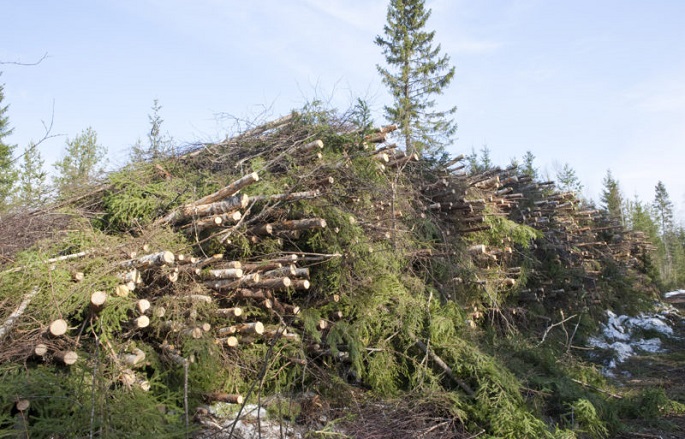Energywood trade goes up last year
Published : 13 Feb 2019, 02:08
Energy-wood trade was active as the recorded purchase volume was 4.3 million cubic metres last year, according to the Natural Resources Institute Finland (Luke).
This figure is one-fifth higher than in the previous year and higher than ever since the compilation of statistics started in 2014, said a press release on Tuesday.
Energywood statistics are estimated to cover a little more than half of all energywood trade.
“Last year, 77 per cent of all energywood intended as raw material for forest chips were purchased in standing sales and the remaining 23 per cent in delivery sales”, said Jukka Torvelainen, senior statistician of Luke.
According to Torvelainen, the development of wood volumes showed differences between trading methods. In standing sales, the purchase volume of all energywood species was at least one-fifth higher than in the previous year, and the total volume increased by 30 per cent.
In delivery sales, the volume of pruned stemwood decreased by 14 per cent, driving the total volume to a decrease of five per cent.
Of all energywood in standing sales, logging residues made up nearly three-fifths and pruned stemwood accounted for one-third.
The average price paid for logging residues was EUR 3.7 per cubic metre, being nine per cent higher than in the year before in real terms. The average price of pruned stemwood dropped by four per cent to EUR 4.5. The prices of all energywood species showed high variation from one region to the next.
Of all energywood in delivery sales, pruned stemwood made up more than half and logging residues accounted for one-fourth. The average price of pruned stemwood was EUR 24.1 per cubic metre, being one per cent less than in the previous year in real terms. The price of logging residues also decreased by one per cent to EUR 15.6 per cubic metre.
In addition to the price paid by buyers, forest owners can also receive government subsidies for their small-diameter stands.
“The subsidy paid for young forest tending and the harvesting of small-sized trees is not included in the prices recorded in the statistics. However, they affect decision-making concerning such stands and the financial results of forest owners”, Torvelainen said.
In 2018, these subsidies paid for eligible sites totalled EUR 430 per hectare. If the volume of pruned or unpruned stemwood harvested from such a site totalled, for example, 50 cubic metres per hectare, subsidies amounted to around EUR 9 per cubic metre. According to the data of the Finnish Forest Centre, the area of sites that received government subsidies for young forest tending and the harvesting of small-sized trees totalled roughly 33,000 hectares in 2018. These received a total of EUR 14.2 million in subsidies.
The amount of forest chips used at heat and power plants has increased steadily in the 2000s. Since 2011, it has ranged annually between seven and eight million cubic metres. Statistics of the amount used in 2018 are not yet available. However, a total of 4.0 million cubic metres of small-sized trees and 2.3 million cubic metres of logging residues were burnt as forest chips in the year before. In addition, 0.5 million cubic metres of stumps and 0.4 million cubic metres of large-sized timber were used.


